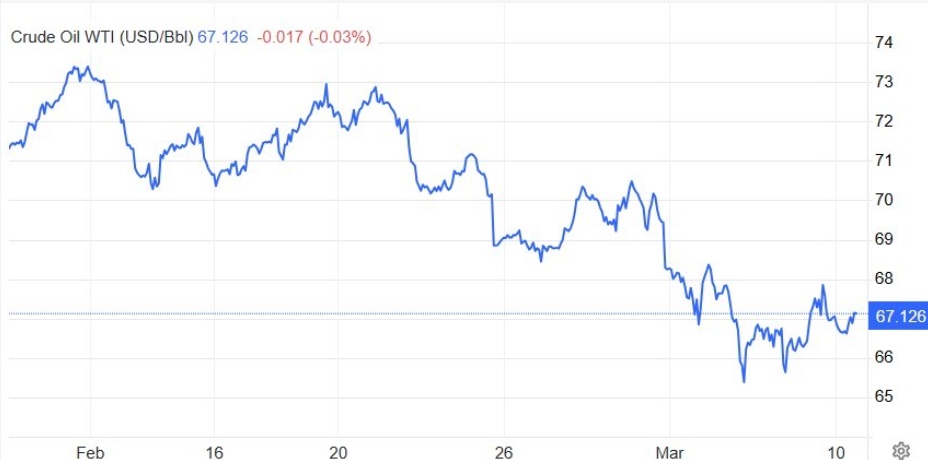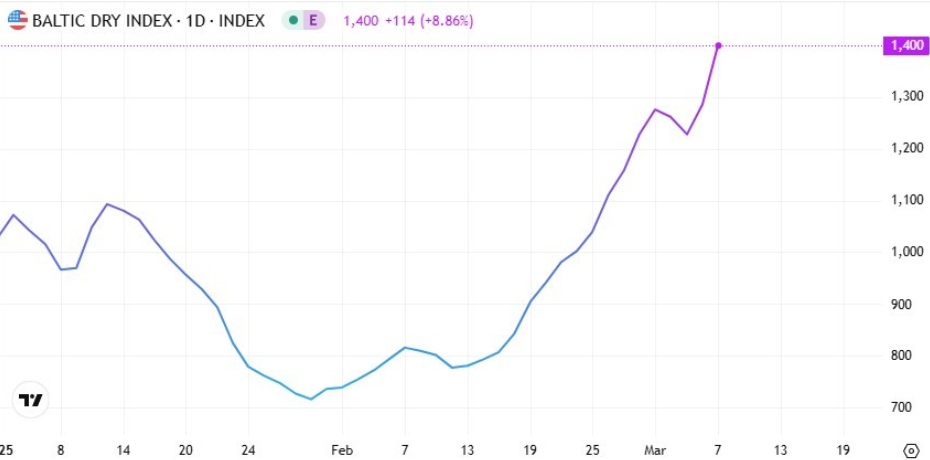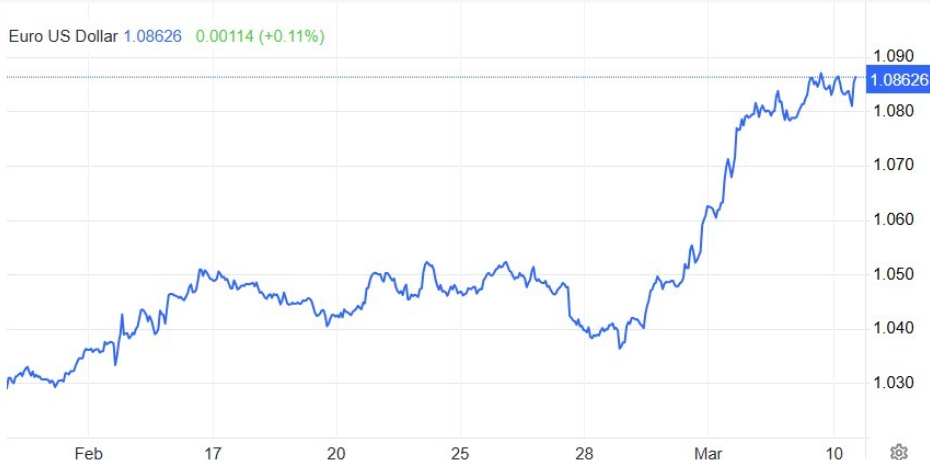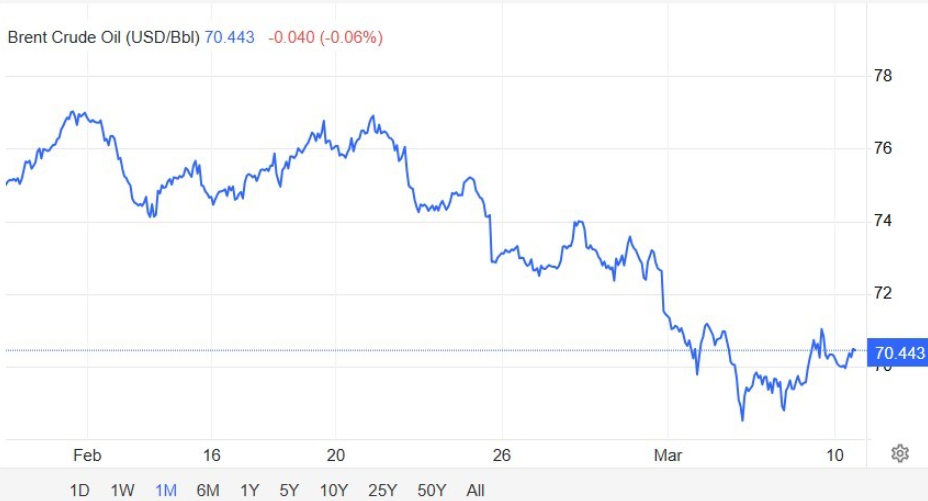Before we discuss the big picture in the markets over the past two weeks, I would like to inform you that due to the time change in the U.S., for the next three weeks (until the last Sunday of March, when we also switch to daylight saving time), U.S. markets will open one hour earlier. For example, futures, which used to open at 01:00, will now open at 00:00, and stocks will trade from 15:30 to 22:00 instead of 16:30 to 23:00.
Of course, this is purely a technical adjustment for our trading hours at Gekodesk since our systems allow access beyond regular market hours. However, during market hours, liquidity and trading volumes in U.S. markets naturally increase.
Last week was certainly not an easy one, given all the announcements regarding tariffs on Canada and Mexico by President Trump, especially with the changes in their implementation or extension that unfolded on Thursday and Friday.
At the same time, the situation in Ukraine—regarding the resolution terms and which parties will be involved in the final agreement—was another factor that contributed to high volatility across all investment instruments, both intraday and in the losses that pushed indices into what was the worst week in the past three months.
I believe that, despite various positive macroeconomic reports from the U.S., indices have reached highly pressured levels. However, at the stock level, many companies have recorded significant gains during this period, unlike the indices. This divergence is what keeps me calm regarding index volatility. This was evident on Friday when, despite the prevailing negative sentiment throughout the afternoon, the markets rebounded after Trump’s announcements and Fed Chair Powell’s speech, with indices recovering from -1.5% to +0.5% by the close.
U.S. indices have recorded losses of -2.5% to -4.0% since the beginning of the month, while European indices have gained between +1.2% and +3.0% over the same period. This gap in performance continues to widen when considering returns from the beginning of the year.
In the U.S., indices are down 0% to -7.5%, whereas in Europe, they have gained between 13% and 16%. This disparity, along with individual stock movements, presents significant opportunities. I expect U.S. indices to soon recover and return to strong gains. Powell’s comments on Friday reinforced this outlook, as he expressed no concerns about the economy, stating that it remains stable. He also noted that tariffs in a strong economy could potentially enhance growth dynamics.
Notably, Friday marked the first time since September 2024 that Powell’s remarks led to market gains, as well as the first time his speech aligned entirely with Trump’s economic policies rather than opposing them. He also reiterated that the 2% inflation target remains on track, a shift from his usual stance since the November elections.
I believe the worst is behind us. The positive macroeconomic data, the tariff postponements, and progress on the Ukraine agreement are among the good news that have yet to be fully reflected in U.S. indices. I anticipate a gradual reversal that will last for an extended period.
A key event to watch is Wednesday’s inflation announcement, which will determine the Fed’s stance in its March 19, 2025, meeting and how quickly it will move toward the rate cuts that the Trump administration desires.
In addition to indices, we have also seen significant movement in the euro, which has risen from 1.04 to 1.0850 against the dollar. In previous reports, we predicted a reaction up to 1.0700, and this movement remains within the limits of an exaggerated uptrend that we do not expect to last long.
Oil prices remain at last week’s levels—$67 for WTI and $70.50 for Brent, with the spread holding at $3.50. We believe it is wise to prepare for potential upward moves in oil, with significant resistance about $7 higher.
The Baltic Dry Index stands at 1,400 points and appears to be continuing its upward trend toward our previously stated target of 1,650 points.
As we have mentioned in previous articles, EUA carbon allowances continue to rise when approaching €68, and we consider these levels attractive for purchases, with an ideal trading range between €60 and €82.
One last development worth monitoring is Trump’s renewed focus on the maritime sector, particularly in shipbuilding, accompanied by a $20 billion investment commitment in the U.S. from CMA.
We have consistently stated in all our reports that under the Trump administration, we will not be short of market-moving announcements and developments. His goal remains to restore the U.S. economy to strength, with lower debt, no deficits, and a shift from a service-based to a production-driven economy. This is the M.A.G.A Big Picture, and anything American-made will gain substantial value—keep that in mind for your investment decisions. Ignore the negative "sirens," just as Odysseus did.
Finally, given these developments and the high market volatility, I believe that those who can act swiftly in their investment decisions will achieve significant returns over the next two years.
We continue to monitor Greek shipping companies listed in the U.S. market, and based on our systems, they are approaching attractive levels, though not quite at our ideal entry points yet. However, they are not far off. We prefer not to disclose specific price targets here, but anyone interested can contact either Maritime Economies magazine or reach out through the contact form on our website: www.gekodesk.gr. 




by Kotsiakis George









